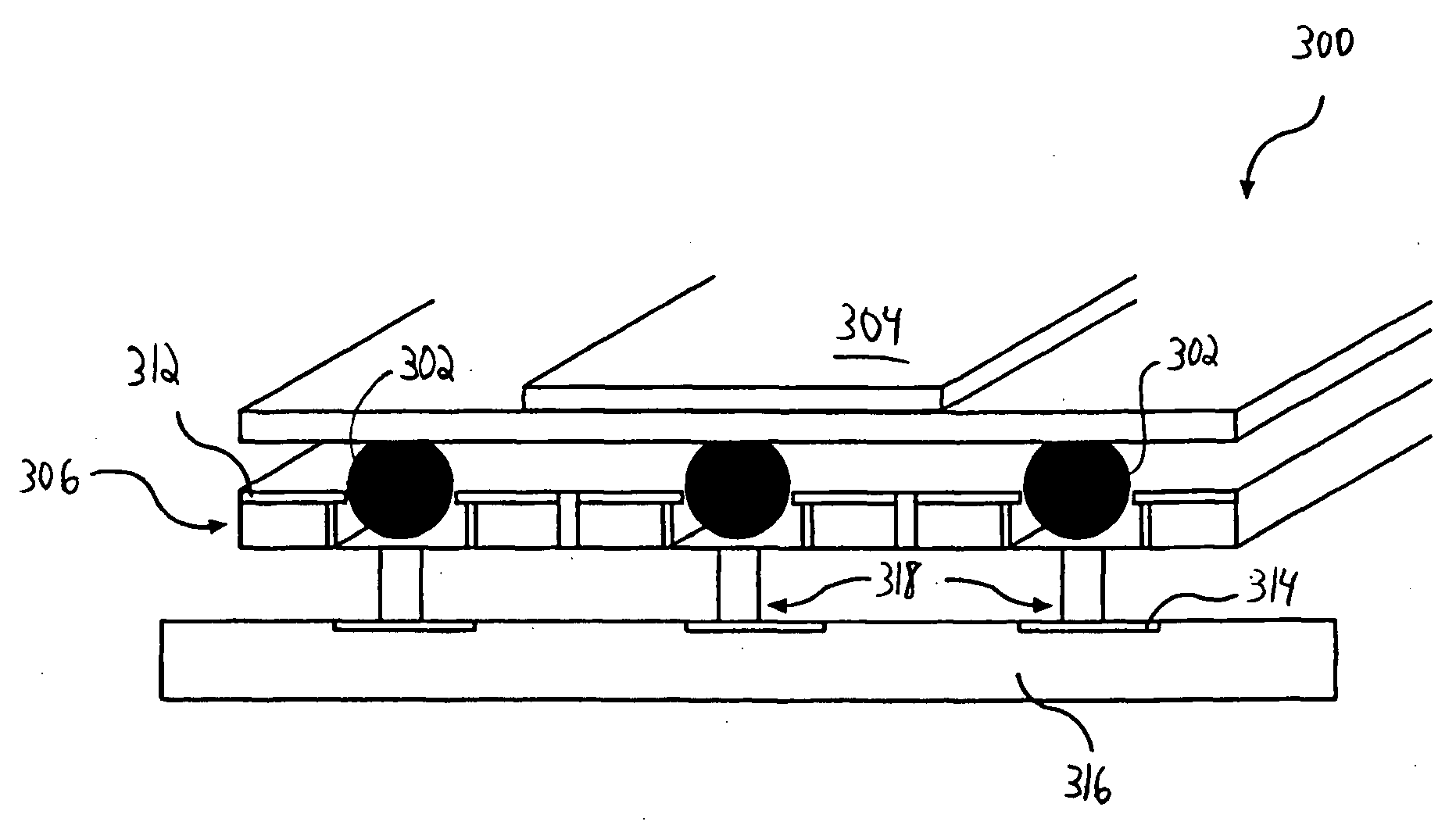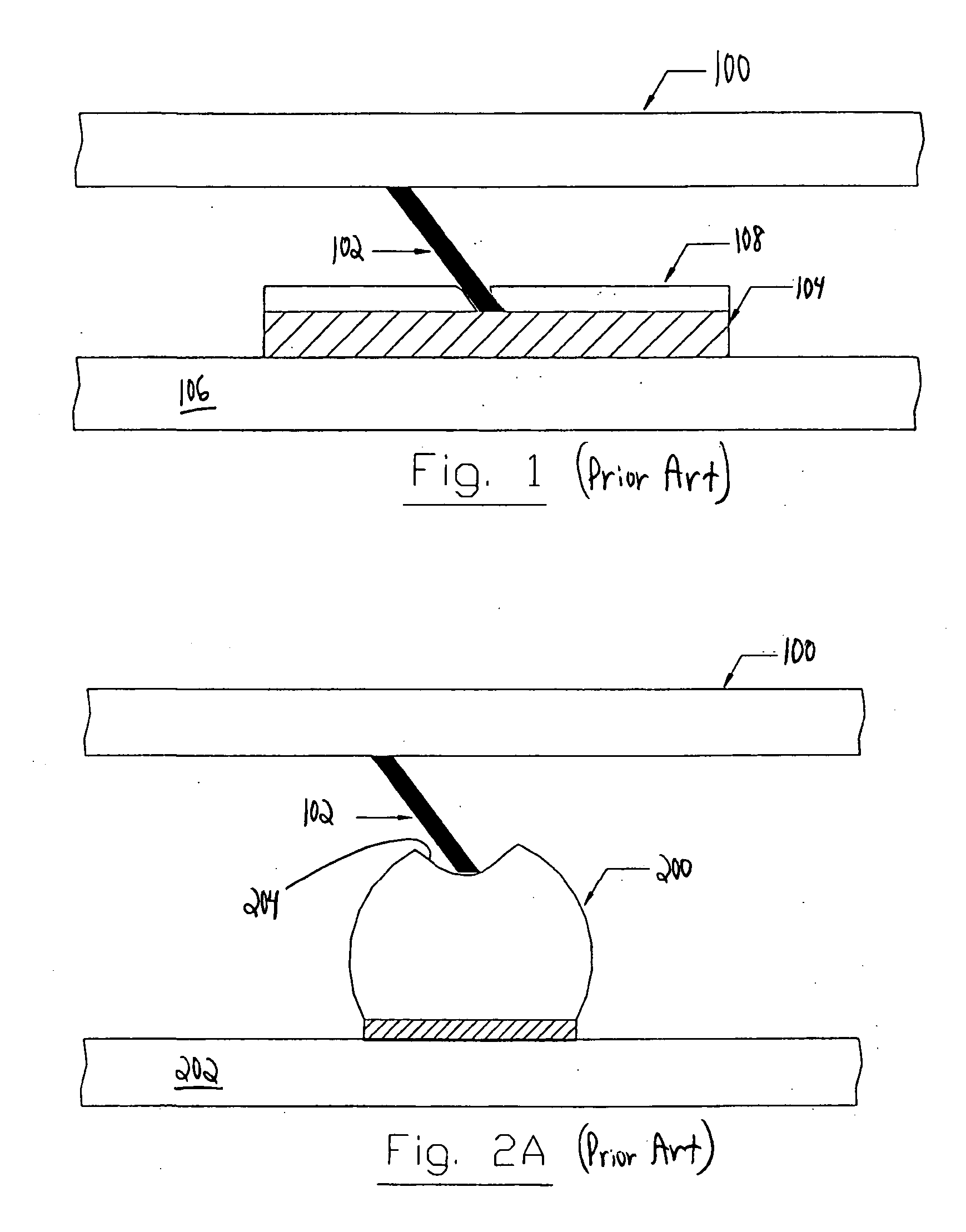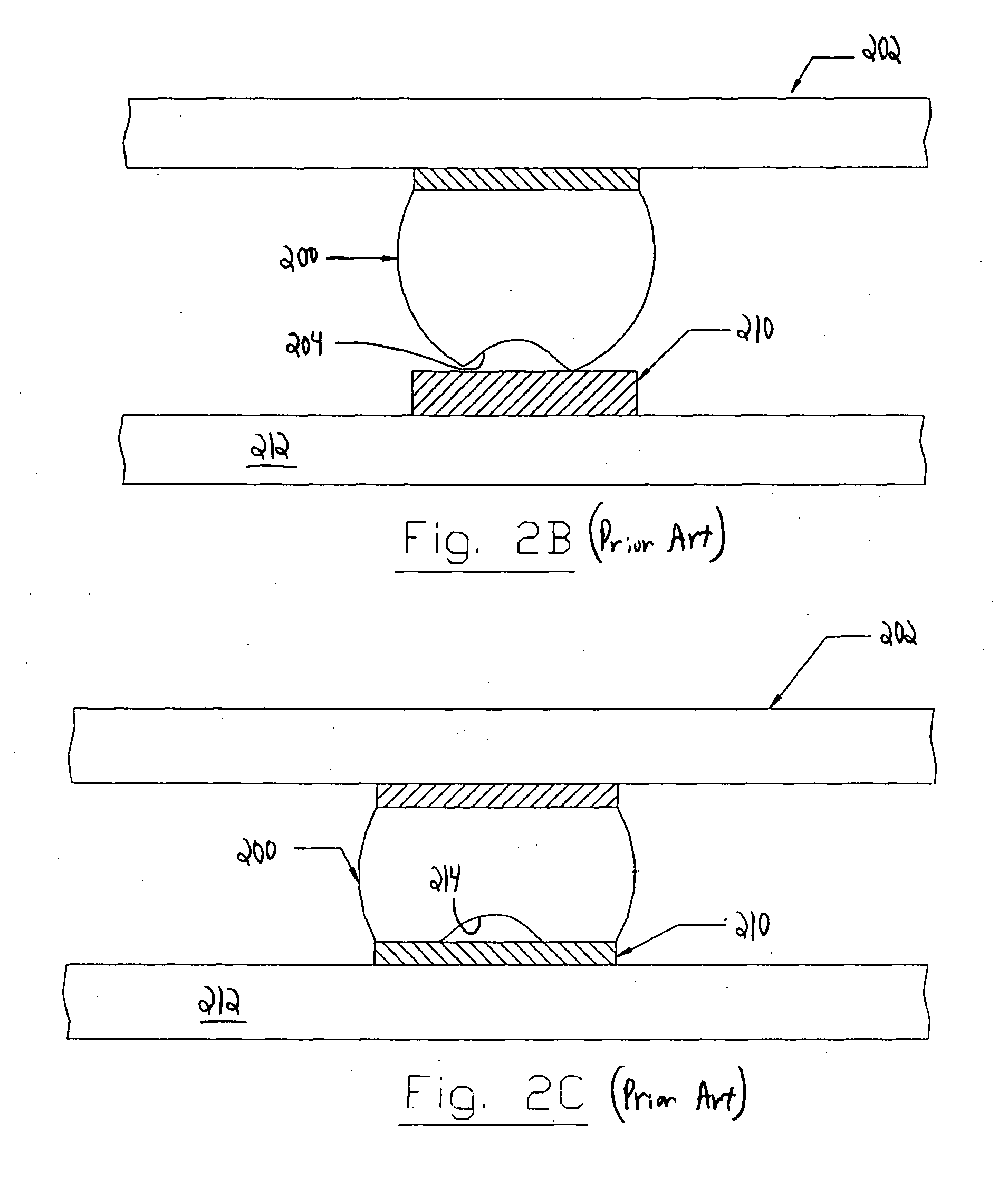Method and system for batch forming spring elements in three dimensions
a technology of spring elements and three dimensions, applied in the field of three-dimensional spring element forming, can solve the problems of increasing lead count, prohibitively difficult and expensive to use conventional techniques to make separable electrical connections to these semiconductor devices, and shrinking package geometries,
- Summary
- Abstract
- Description
- Claims
- Application Information
AI Technical Summary
Problems solved by technology
Method used
Image
Examples
Embodiment Construction
[0066]FIGS. 3a and 3b are cross-sectional views of a beam ball grid array (BBGA) system constructed in accordance with the present invention. In the first construction 300 illustrated in FIG. 3a, solder balls 302 provide a method of establishing an electrical contact between the device, packages, or module 304, and a carrier 306. The solder balls 302 are shown disposed within plated through holes or vias 308 that have been fabricated into the carrier 306 by printed circuit techniques. The solder balls 302 are given elasticity by virtue of their suspension upon flexible contact arms 310 formed as part of a layer 312. The contact arms 310 cradle the solder ball 302, as shown in FIG. 3e, and provide a spring-like support as shown in FIGS. 3c and 3d.
[0067] An array of contact arms 310 is fabricated in layer 312, as better observed with reference to FIG. 3f. Different design patterns for the contact arms 310 are respectively illustrated by elements 310a, 310b, 310c, and 310d in FIG. 3g....
PUM
 Login to View More
Login to View More Abstract
Description
Claims
Application Information
 Login to View More
Login to View More - R&D
- Intellectual Property
- Life Sciences
- Materials
- Tech Scout
- Unparalleled Data Quality
- Higher Quality Content
- 60% Fewer Hallucinations
Browse by: Latest US Patents, China's latest patents, Technical Efficacy Thesaurus, Application Domain, Technology Topic, Popular Technical Reports.
© 2025 PatSnap. All rights reserved.Legal|Privacy policy|Modern Slavery Act Transparency Statement|Sitemap|About US| Contact US: help@patsnap.com



